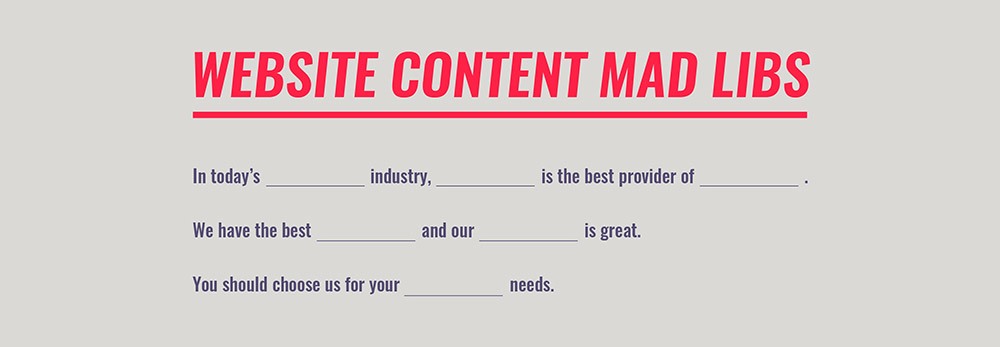Search engine optimization (SEO) is a critical aspect of any company’s marketing strategy, as an optimized site can drive significantly more organic traffic – but more importantly, it can attract targeted users to subsequently drive your business strategy and increasing attributed revenue.
With that in mind, it’s crucial to conduct SEO audits from time to time, to ensure search visibility and overall site health are in good standing. This in-depth analysis is the only way to identify and resolve minor issues before they become bigger ones. But with all the data at your disposal, where is a marketer to begin?
At times like these, the best advice I can give is organize, analyze, and interpret. Let’s start with keyword research.
Keyword Research
Keyword research provides insight into where and how well you and your competitors are ranking within search results. This is a comprehensive review that should take into account not only search volume, but competitive landscape and specific client opportunities relevant to current status as well.
Which search terms are being targeted? Are any being targeted at all, or does the site rank for whatever term it can with no clear strategy? In some cases, the client may not even know which keywords their site actually ranks for or how to even find that information. This is why research is key.
Our team starts by identifying real competitors. Real competitors. Why do I feel the need to reiterate that? It’s because you need to level-set with your clients (and maybe yourself) to help them understand not only who their real-world competitors are, but also who their search competitors are. They may be the same, but in my experience, they tend to differ to one degree or another.
In many cases, I’ve had SMB clients come to me and say, “we want to rank #1 for [ultra-competitive keyword] because [largest company in the industry] ranks #1 for it and they’re our competition.” And then I have to break the bad news: “Yes, you’re technically in the same industry, but they’re not your competitor.” When our team conducts competitive keyword research, we’re not only looking for volume, we’re looking to balance both short-term and long-term opportunities by those keyword categories that provide the best opportunities for our client to rank.
Once you’ve identified a mix of real-world and search competitors (we usually choose between five and ten), you’ll need to pull keyword rankings for each domain using any of the keyword research tools out there; we prefer SEMrush, Moz, or Brightedge. With this information gathered into one document, you can now begin to distill insights from this data with these questions:
- Are there terms the client’s site is ranking for that their competitors are not, and vice versa?
- Are there terms that have lower search volume but higher intent? How do we rank for those?
- Do patterns (positive or negative) emerge in the keyword categories clients rank for?*
- What pages rank for the most keywords? What pages rank for relevant keywords?
Once you’ve answered these questions, you should have a pretty good idea of keyword categories to focus on during the content assessment, which we’ll get to later. For now, we’re onto the backlink analysis.
*I had a client that ranked for a ton of Christmas party terms (it was their largest keyword category, by far) because they wrote a bunch of lifestyle blogs about planning a Christmas party. Only problem was their business had NOTHING to do with Christmas in any way.
Backlink Analysis
Auditing the client’s backlink profile, as well as that of search competitors, allows us to ascertain what content relevant third parties find useful and engaging, and it helps us detect issues and/or opportunities within the client’s backlink profile.
Comparing your backlink profile against competitors’ profiles can help you understand a ton about what potential customers and relevant authorities are looking for, including:
- What content other sites find valuable
- What competitor content is receiving recognition
- Where you may have opportunities to develop content
- Which industry site you can potentially pitch your content to
Once you’ve had a chance to do a cursory review, it’s time to look the quality of the backlinks. Why are you getting them? Does your site have too many of a certain link type? Are there sitewide links from a domain?
At face value, this information can help you determine whether you need to curate your backlink profile or disavow spammy links, but at a deeper level, it can tell you whether anyone thinks your content’s worth a damn.
Now that you’ve got that out of the way, it’s on to the content assessment!
Content Assessment
So the in-depth analysis part is over now, right? False.
Armed with the competitive keyword research insights and backlink analysis you’ve undoubtedly committed to memory, it’s now time to apply that knowledge as part of a content assessment.
The content assessment helps us learn what content is most successful not only on the client’s site, but on competitors’ sites as well. Identifying content that performs well allows us to determine what is and isn’t working now, and also serves as a guide for a content creation strategy in the future.
Our team begins the content assessment by reviewing the pages that rank for relevant keyword categories on both the client’s and competitors’ sites. Going page by page, we ask ourselves the following questions:
Do some pages have objectively better content than the others?
“But Andy,” you say, “the quality of the content is subjective.” Real talk – in most cases content quality is very clear. We’ve all been to sites with templated content, pages that look like the company used mad libs to create pages that provide no real value, but are keyword-stuffed to the gills.
Quality means providing visitors with the answers they’re searching for. It means you actually sound like you know what you’re talking about in a meaningful way.
If you’re just stuffing keywords into garbage content, you may rank for a minute, but with all the focus on site engagement as a ranking factor, you’re eventually going to get knocked down.
Does the content have a focused topic?
What is this page about? If that question doesn’t have a simple answer, you’re doing it wrong. Some websites seem to think quantity equals quality and so they talk about everything they can do from each different angle without a clear focus. If that doesn’t sound appealing to read, imagine what your visitors must think.
Do visitors find the content engaging?
You probably don’t have access to competitor reporting data, but you should have access to your client’s (or your own). So jump in there and find out whether anyone is spending time on your pages. Are organic visitors landing on your pages and immediately bouncing, or are they sticking around? Do they view any other pages, or do they do an onsite search for the thing they were looking for and then leave? As I mentioned just a few paragraphs ago, site engagement is key to search visibility these days, so it’s in your best interest to understand what visitors do and don’t find engaging on your site.
Do relevant third-party sites find the content valuable?
Remember the backlink audit you conducted? This is where those insights come in handy. Go read those.
Next we’re going to talk about site architecture – it’s not for fluffy marketers, which makes it my favorite part of any SEO audit.
Site Architecture Analysis
I know what you’re probably thinking: “site architecture analysis sounds like a buzzword that pretentious people use.” And you’re right. But aside from the terrible name, the site architecture analysis is an in-depth review of the site with the intent of identifying technical issues with significant organic search ramifications.
These audits don’t just focus on technical SEO basics such as title tags, headers, and meta descriptions, they also delve into more advanced ranking factors including page speed, mobile optimization, and internal linking structure, among others.
Here at Element Three, we review around three dozen different criteria to ensure the technical aspects of our clients’ sites aren’t putting a damper on their search visibility, including:
On-page Technical SEO (URL structure, titles, h1s, etc.)
This is what most inexperienced marketers think of when they hear SEO, but it’s actually the most basic starting point. You have to be able to walk before you can run, and the same goes for SEO.
- Do you have a standard URL structure, or does it vary by page?
- Are relevant keywords incorporated into URLs in an appropriate manner?
- Are title tags, H1s, and meta descriptions optimized (not over-optimized) for the page topic?
Site Structure (information architecture, internal linking, etc.)
Good site structure means visitors can find what they are looking for in an intuitive manner.
- Do your pages live in the appropriate subfolders?
- Can users find other relevant pages after they have consumed the content on the current page?
- Is the information on your site organized in a way that is conducive to user behavior, or is it a hindrance to visitors?
Crawl Audit (redirects, errors, broken links, etc.)
Search bots and site visitors are fickle – they expect to land where you told them they would. That’s why it’s important you make sure any redirects, errors, or broken links are resolved in a timely manner. The last thing you want to do is send someone to a 404 page or a redirect chain that ultimately times out. While the existence of those error pages doesn’t directly impact SEO, a ton of bounces will ultimately affect search visibility via decreased engagement metrics.
Technology Stack (site speed, Java/CSS issues, etc.)
Given search engine emphasis on mobile and onsite engagement, you need to ensure your tech specs are in tip-top shape. Sure your site’s pretty, but it’s slow, what with the resource-intensive header video background, the multiple server calls, and all the uncompressed 5MB stock photography of generic business people. People hate slow things – traffic, the BMV, but especially websites. I don’t know about you, but I’ll bounce if a site doesn’t load in about two seconds; don’t even get me started on websites that don’t employ browser caching. I guarantee your visitors feel the same way.
Webmaster (sitemaps, indexation, robots.txt, etc.)
As with the on-page technical SEO, this is the most basic stuff. If you don’t do this, you’re probably wasting your time reading this blog post.
That said, make sure you’ve submitted a sitemap and checked the indexation of your pages, both of which you can do through Google Search Console. Easy peasy.
Knowing is Half the Battle
But it’s not the whole battle. Now that you’ve completed this audit, it’s time to get to work. Bear in mind, this is not an exhaustive list, just a foundation you can start from. Our team usually finds new things to incorporate each time we conduct an SEO audit and every new bit of data begets a new task (yay work!). However, I feel confident that if you follow the steps outlined above, you’ll gain a ton of insights regarding your site’s search visibility and you’ll have the data needed to understand how to improve it.
Remember, a beautiful site is all well and good, but without a comprehensive SEO strategy, it won’t mean a thing. Or as one of my favorite musicians, David Allan Coe, put it, “It’s not the beauty of a building you should look at; it’s the construction of the foundation that will stand the test of time.”









